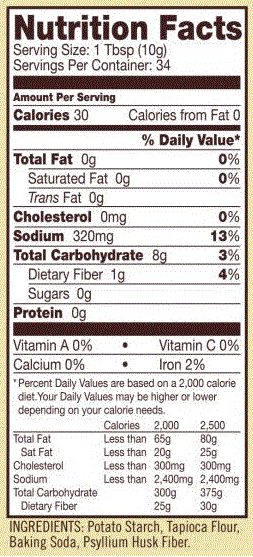Product labels
A sample label is on the right:
The following items should be on the label:
- The serving size and number of servings in the package
==========
- Calories, and sometimes Calories from Fat
−−−−−−−−−−
- Total Fat: grams per serving and Percent of Daily Value
- Saturated Fat: grams per serving and Percent of Daily Value
- Trans Fat: grams per serving and Percent of Daily Value
- Cholesterol: grams per serving and Percent of Daily Value
- Sodium: grams per serving and Percent of Daily Value
- Total Carbohydrate: grams per serving and Percent of Daily Value
- Dietary fiber: grams per serving and Percent of Daily Value
- Sugar: grams per serving and Percent of Daily Value
- Protein: grams per serving and Percent of Daily Value
===========
- A list of vitamins and minerals and their percentages.
- Optional lists
===========
- List of ingredients (placed in order from largest to smallest)
- The content of one ingredient is in parentheses after it.
- The items in parentheses are placed in order from largest to smallest.
- Specific spices are listed as 'spices' unless they are known allergens.
- A list of major allergens contained in the product (if present - not in example).
- Manufacturer's contact info
 The Tools:
The Tools: The Tools:
The Tools: